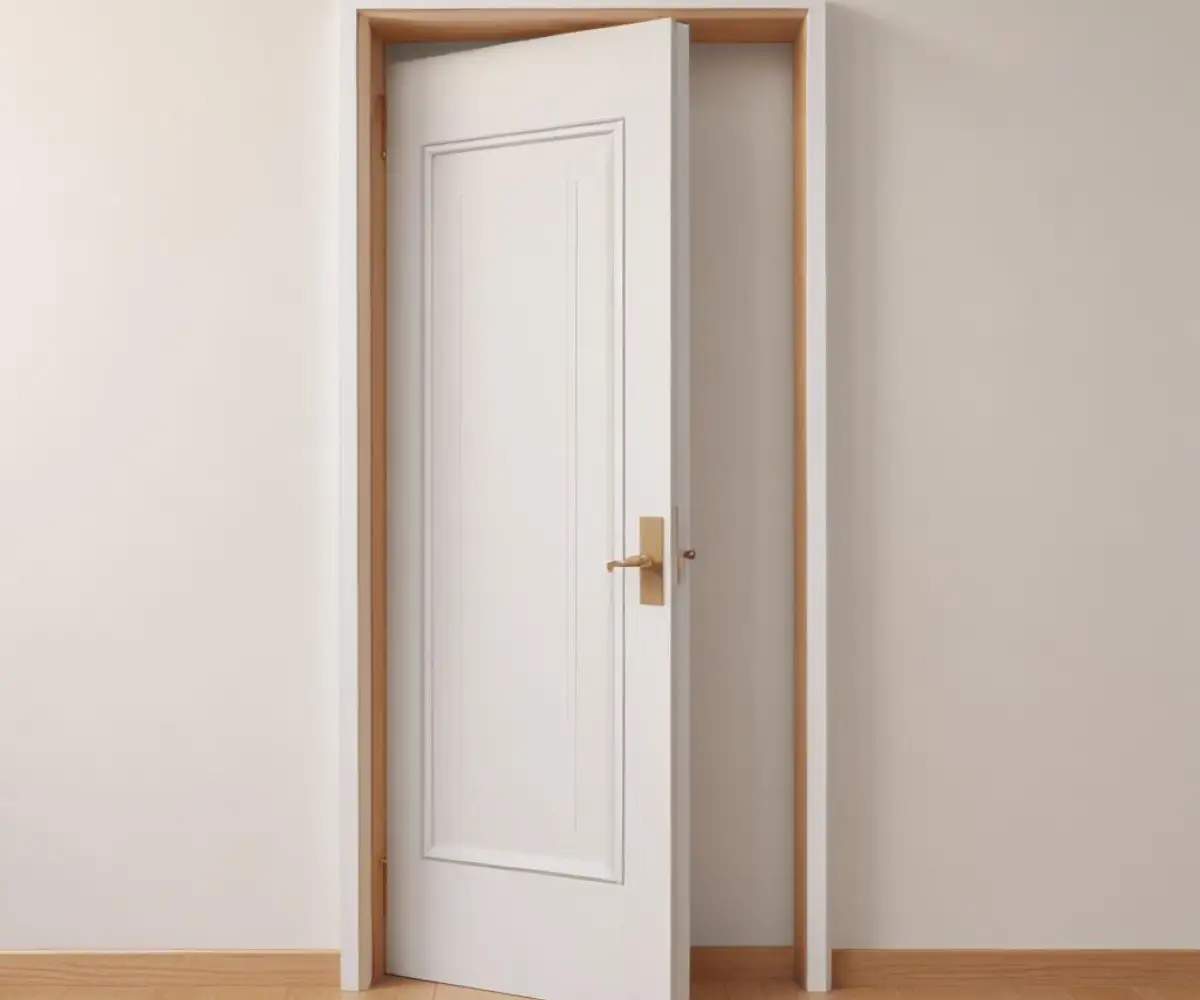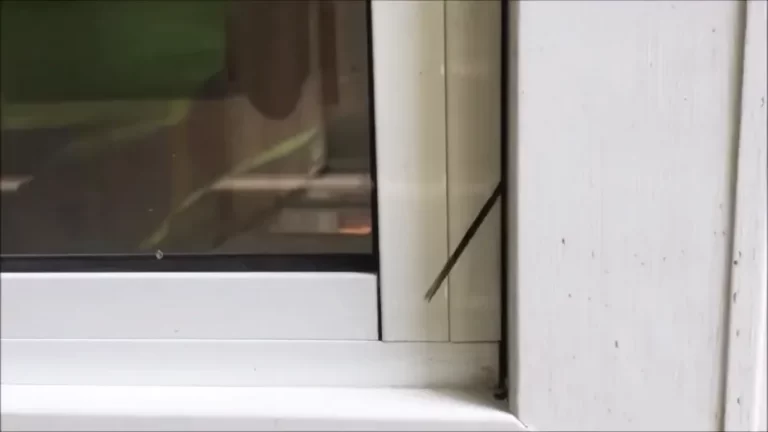Cat Door to Basement: The Genius Hack for a Smell-Free Home
The persistent challenge of managing a litter box is a universal truth for cat owners. The unwelcome odors, the endlessly tracked litter, and the simple unsightliness of a plastic box in the corner of a room are problems that demand a better solution. Keeping the litter box in main living areas is often a compromise, not a choice.
A surprisingly simple and effective solution is hiding in plain sight: your basement. By installing a dedicated cat door to the basement, you can permanently move the litter box out of your living space. This single home improvement project can revolutionize your home’s cleanliness and your relationship with your cat’s necessary business.
You'll Learn About
Why a Basement Cat Door Is a Game-Changer for Your Home
Relocating the litter box to the basement is more than just a spatial change; it’s a strategic move that addresses several common pet owner frustrations. The benefits extend beyond simple convenience, creating a cleaner, fresher, and more harmonious living environment for both you and your feline companion.
Ultimate Odor Control and Containment
The most immediate and impactful benefit is the near-total elimination of litter box odors from your daily life. Basements, often large and better ventilated than small bathrooms or laundry rooms, are ideal for dissipating smells before they can permeate your home. This simple relocation acts as a powerful, passive odor control system.
Furthermore, the mess of tracked litter is confined to the basement. No more sweeping granules off your kitchen floor or finding them in your bed. A cat door ensures the mess stays where it belongs, drastically simplifying your cleaning routine and improving overall home hygiene.
A Private Sanctuary for Your Cat
Cats are naturally private animals, and a secluded litter box location can reduce their stress. A quiet, low-traffic basement area provides them with a secure place to do their business without the risk of being startled by household activity. This can be especially beneficial for timid or anxious cats.
This dedicated space also provides a crucial escape route and territory management for cats in multi-pet households. Giving a cat its own area can prevent conflicts and bullying from other animals, fostering a more peaceful coexistence.
The Definitive Solution for Nosy Dogs
For households with both cats and dogs, a cat door is the ultimate solution to the unpleasant and unhealthy issue of dogs getting into the litter box. A small, cat-sized opening physically prevents larger dogs from accessing the area. This eliminates a major source of stress for pet owners and protects the health of both animals.
Choosing the Right Cat Door for Your Basement
Selecting the appropriate cat door is critical for a successful installation. The type of door you have, the size of your cat, and your specific needs—like keeping other pets out—will all influence your choice. Taking the time to evaluate these factors ensures a seamless and effective final result.
Understanding Your Door: Hollow Core vs. Solid Core
Before you purchase a cat door, you must identify what kind of interior door leads to your basement. Hollow core doors are lightweight and common for interior use, but they require extra support during installation. Cutting into them reveals an empty space that must be framed to provide a stable surface for the cat door screws.
Solid core doors, on the other hand, are heavier and filled with wood composite material. While they are more challenging to cut through, they provide a sturdy, solid surface for mounting the cat door without any need for additional framing. This makes the installation process more straightforward.
Sizing Is Everything: Getting the Perfect Fit
A common mistake is choosing a door that is too small for your cat. To avoid this, measure your cat’s width at their widest point (usually the shoulders or hips) and their height from the floor to the top of their shoulders. Add at least one to two inches to both measurements to determine the minimum flap size needed for comfortable passage.
The placement height is also crucial. The bottom of the cat door opening should align with your cat’s belly height from the floor. This allows them to step through easily rather than having to awkwardly climb or duck down.
Types of Cat Doors Explained
The market offers a variety of cat doors, each with unique features. A simple flap door is the most basic option, while others offer more control and security. Understanding the differences is key to choosing the right one for your home’s needs.
| Type of Cat Door | Key Feature | Best For | Pros | Cons |
|---|---|---|---|---|
| Standard Flap | Basic plastic flap, often with a magnet. | Simple interior access where drafts aren’t a concern. | Inexpensive, easy to install, easy for cats to learn. | Offers no security, can create drafts, may be noisy. |
| 4-Way Locking | Manual lock with four settings: in-only, out-only, open, and locked. | Controlling cat’s access to the basement at certain times. | Provides full control over movement, relatively affordable. | Requires manual changes to the lock settings. |
| Brush-Style / No Flap | An open hole trimmed with soft brushes. | Timid cats who dislike pushing flaps; interior doors only. | Silent, no resistance for the cat, simple installation. | No draft or sound insulation, allows access for any small animal. |
| Microchip/Magnetic | Flap unlocks only for a cat with a corresponding microchip or magnetic collar key. | Multi-pet homes where you need to keep a dog or other cats out. | Maximum security and selective entry, prevents unwanted access. | More expensive, requires batteries, potential for collar key loss. |
Step-by-Step Installation Guide: A Weekend Project
Installing a cat door is a manageable DIY project for most homeowners. With the right tools and a clear plan, you can complete the installation in just a few hours. Following these steps carefully will ensure a professional and secure fit.

Tools and Materials You’ll Need
Before you begin, gather all necessary tools and materials to ensure a smooth process. You will need a tape measure, pencil, level, drill with various bits, a jigsaw, safety glasses, and the cat door kit itself. If you have a hollow core door, you will also need four small pieces of wood (e.g., 1×2 pine) and wood glue to build an interior frame.
Step 1: Measure and Mark the Opening
First, remove the basement door from its hinges and place it on a pair of sawhorses. Determine the correct height for the cat door based on your cat’s measurements. Most cat door kits come with a paper template. Tape this template to the door, using a level to ensure it is perfectly straight before tracing the cutout lines with a pencil.
Step 2: Drill Pilot Holes and Cut the Opening
Drill holes in each corner of the traced outline. These holes serve as a starting point for your jigsaw blade. Carefully insert the jigsaw blade into one of the corner holes and slowly cut along the pencil line until the opening is complete. Sand any rough edges for a smooth finish.
Step 3: The Crucial Step for Hollow Core Doors
If you have a hollow core door, you now need to build a simple frame inside the opening. Measure the interior thickness of the door and cut your wood pieces to fit snugly inside the top, bottom, and sides of the hole. Apply wood glue to the pieces and insert them to create a solid wood liner. This provides the necessary stability for the cat door screws.
Step 4: Assemble and Secure the Cat Door
With the opening prepared, you can now install the cat door. Insert the exterior frame (the side without the screw holes) into the opening from one side. Then, place the interior frame on the other side. Gently press the two halves together and secure them with the provided screws, being careful not to overtighten.
Beyond Installation: Advanced Considerations
Once the cat door is installed, a few additional considerations can optimize its function and ensure it integrates seamlessly into your home. Thinking about potential issues like drafts, noise, and the basement environment itself will prevent future problems.
Soundproofing and Drafts: The Unspoken Problems
A simple opening to the basement can allow for more than just your cat to pass through; sound and air can travel, too. Furnace or water heater noises from the basement may become more noticeable. To mitigate this, choose a cat door with strong magnets and a brush liner, which create a better seal.
Additionally, adding a door sweep to the bottom of the basement door can help block drafts and muffle sound. If your basement is significantly colder than the rest of your house, investing in an insulated or “extreme weather” pet door, even for an interior installation, can help maintain temperature stability.
Ensuring a Cat-Friendly Basement Environment
Before giving your cat free rein, ensure the basement is a safe space. Securely store any chemicals, sharp tools, or other hazards. Check for exposed wiring or anything your cat could get trapped in. A safe environment is paramount.
Cats prefer well-lit areas, so consider adding a motion-activated night light near the litter box. This will help them feel more secure when navigating the basement at night. Good ventilation is also important for keeping the litter box area fresh and healthy.
Training Your Cat to Use Their New Door
Some cats will take to their new door immediately, while others may be hesitant. Never force your cat through the opening. Instead, start by propping the flap open so they can see the other side and walk through an open hole.
Use treats and positive reinforcement to encourage them. Have a person on each side of the door, taking turns calling the cat and rewarding them with a favorite treat when they pass through. Patience is key; with a little encouragement, your cat will quickly learn to appreciate their newfound freedom.
Conclusion: A Simple Solution to a Pervasive Problem
A cat door to the basement is more than just a convenience; it’s a strategic home upgrade that solves the persistent problems of litter box odor and mess. By relocating the litter box to an out-of-the-way space, you can reclaim your living areas, improve your home’s hygiene, and provide your cat with a private, stress-free environment.
With careful planning and a straightforward installation process, this project offers an exceptional return on investment for any cat owner. It is a simple, elegant, and highly effective way to create a cleaner, fresher, and more harmonious home for everyone.

